Bees @ ATC
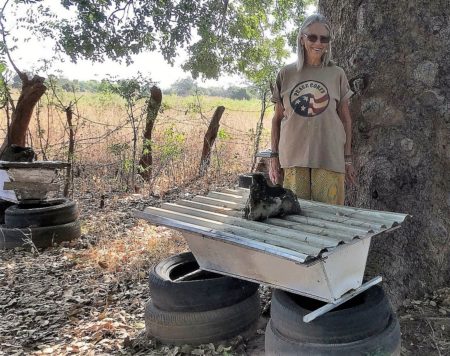
My worksite is at an Agriculture Senior Secondary School (ATC), and the school strives to involve the students in all of the agriculture activities. The school recently purchased ten bee suits, and now there are opportunities for the students to get up close and personal with bees. Currently, there are four bee hives at ATC, and the students helped harvest the honeycomb from one of the hives in early November.
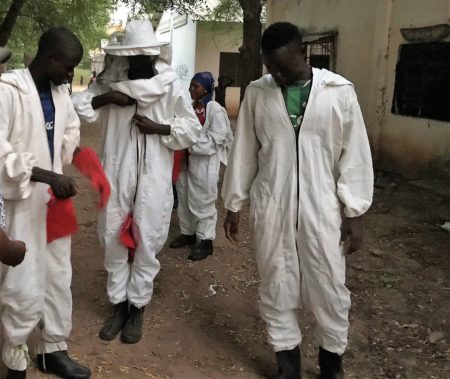
It is quite an ordeal putting on a bee suit, which includes the one piece suit, rubber gloves and boots. It is important to seal off any potential openings by cinching the pant legs and sleeves with string to insure no bees can get inside. They practiced the day before getting into their suits, organized all their gear, and helped each other get dressed the evening of the harvest.
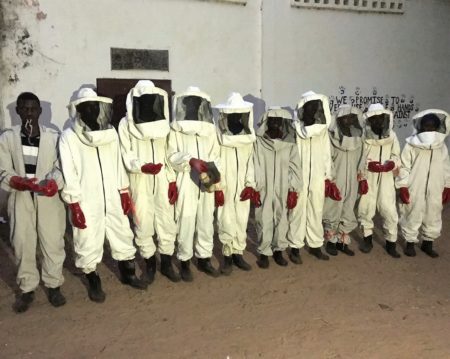
We followed Jatta, my counterpart and the ATC beekeeper, to the hives which are away from the classrooms in the orchard. We brought a bucket to collect the honeycombs, a smoker with live coals, and many flashlights. It is important to work with bees during the coolest part of the day, when they are the least active, and all of the bees have returned to the hive for the night.
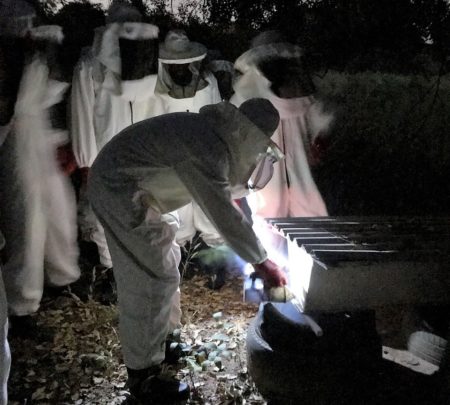
Before opening the hive. smoke is blown into the entryway to subdue the bees, and one student was in charge of continually smoking the bees, to keep them as calm as possible. Bees don’t like being jostled about, and a nervous beekeeper might annoy them. If a bee is injured, it releases hormones that recruit other bees in the area to attack. But if you’re deliberate and careful, they’ll avoid intentionally killing themselves just to sting you.
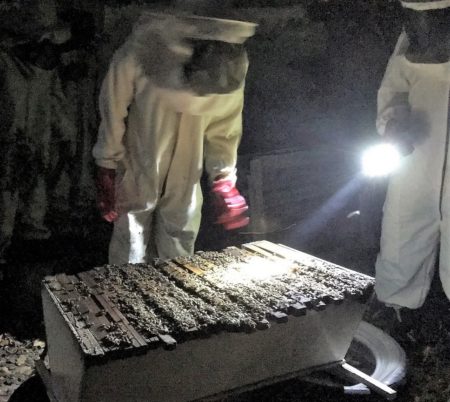
When the hive roof was removed we observed bees all over the top bars. The students were fascinated watching the bees, knowing they were protected by the bee suits, and I think they felt “special” in their protective gear. I appreciate ATC investing in bee suits, so the students could have this “hands on” experience. They were all very attentive to what we were observing, and hopefully some future beekeepers will develop from this program.
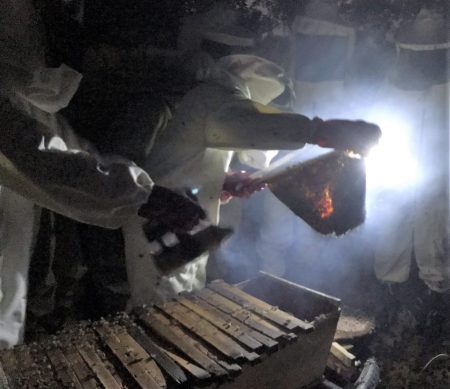
The top bars needed to be carefully pried apart, because the wax was attaching the bars together. Each top bar was removed one at a time, the honeycomb sliced off into the collection bucket, then the process was repeated with the next top bar. After each bar was cleaned of honeycomb, the hive was reassembled, and the roof was replaced. By working slowing and methodically, the bees remained calm and the students had a great learning experience.
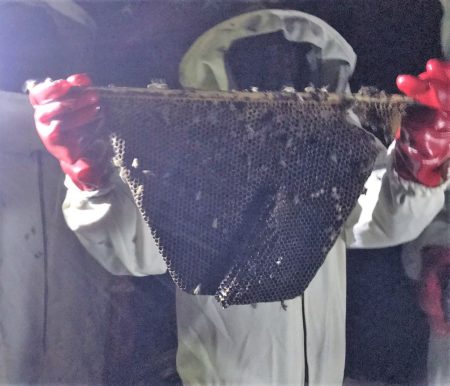
Some Bee Facts
Honey bees are social creatures and there are three types of bees – worker, queen, and drone. The worker bees are all sterile females, and are responsible for feeding, cleaning, nursing, and defending the group. Male drones live to mate with the queen, who is the only fertile female in the colony.
The queen bee is the dominant, adult female bee, and is the mother of most, if not all the bees in the hive. The future queen bee larva is selected by worker bees, to be nourished with a protein-rich secretion known as royal jelly, so that it can become sexually mature. A newly hatched queen begins her life in a duel to the death with any other queens present in the colony, and must destroy potential rivals that have not yet hatched. Once she accomplishes this, she takes her virgin mating flight. Throughout her life as she lays eggs, she secretes a pheromone that keeps all other females in the colony sterile.
The drone’s only job is to mate with the queen. Mating occurs in flight, which accounts for the need of the drones for better vision, which is provided by their large eyes. Should a drone succeed in mating, he soon dies because the penis and associated abdominal tissues are ripped from the drone’s body after sexual intercourse. In areas with colder winters, worker bees mind the food stores and prevent drones from entering the hive since they are no longer needed, effectively starving them to death.
Worker bees are female. They accomplish every chore unrelated to reproduction. In their first days, workers tend to the queen. For the remainder of their short lives (just a single month) they feed the drones, preserve the honey, build the honeycomb, store pollen, remove the dead, forage for food and nectar, carrying in water, fan the hive to maintain the proper temperature, and guard the hive against invaders such as wasps. Worker bees also make the decision, when necessary, to relocate the colony in a swarm, and then rebuild the new nest.
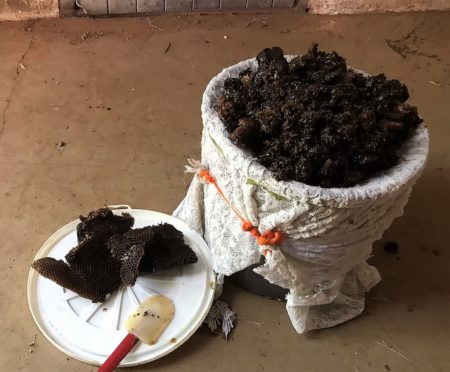
Unfortunately, the amount of honey harvested was minimal, because in three of the four hives the bees had swarmed. The honey harvest was delayed this year, because the school administration was waiting for the student bee suits to arrive. The next harvest will take place in the spring, and there should be a substantial increase in the amount of honey and wax produced.
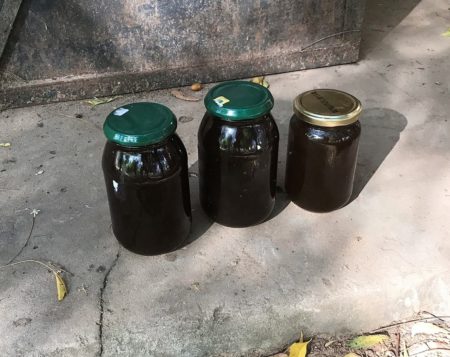
There are a couple of reasons a hive will swarm, and good beekeeping techniques can usually prevent this occurrence. Congestion can be a problem, having too many bees for the hive space, leading to no cells for the queen to lay into. Another possibility is an overheated hive, and September and October are very hot here, so that may have contributed to the problem. The spring harvest will be at the end of the Gambian cool season, and we are looking forward to having ten different students have the opportunity to experience working with the bees.
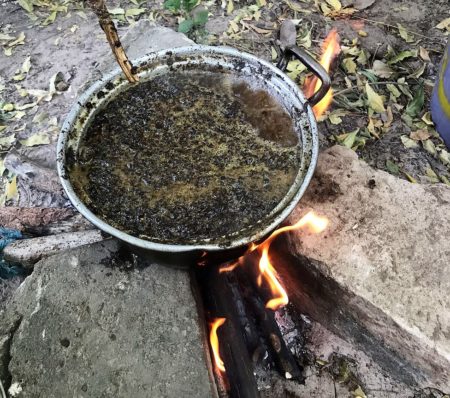
After the honey had drained out of the comb, the next step is to render the honeycomb into beeswax. A pot of water is heated up and the depleted honeycomb is broken into small pieces and placed in the hot water to melt. When the wax had melted into the water, it was poured into a porous cloth over a bucket. The wax will pass through into the bucket, and the impurities will remain in the cloth. We then wrung out any remaining wax, and repeated the process until all the wax was rendered from the comb.
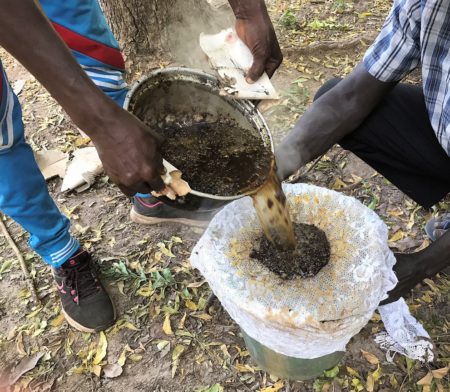
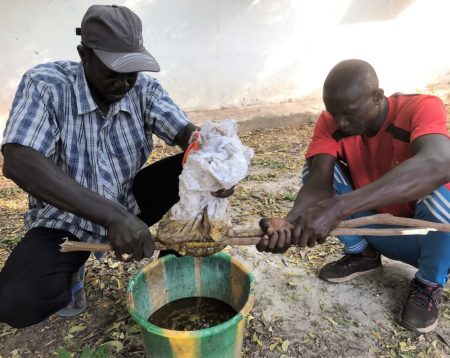
Currently in The Gambia, there is a lack of awareness, training, and support for beekeeping and product development. ATC is introducing beekeeping into the school curriculum, but much needs to be done nationally to encourage production and develop markets for bee products. Beekeeping is a good fit for the rural population, because it doesn’t require a lot of time, and can easily be incorporated into their other farming activities.
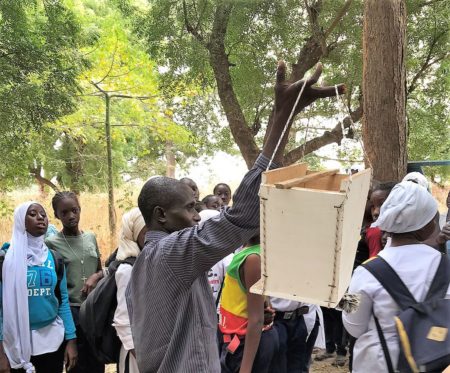
The primary in way to increase the amount of beehives here in The Gambia, is for a beekeeper to catch a queen bee. A catcher box is designed to attract feral queen bees. I made the box pictured above when I attended a beekeeping workshop at BeeCause earlier this year.
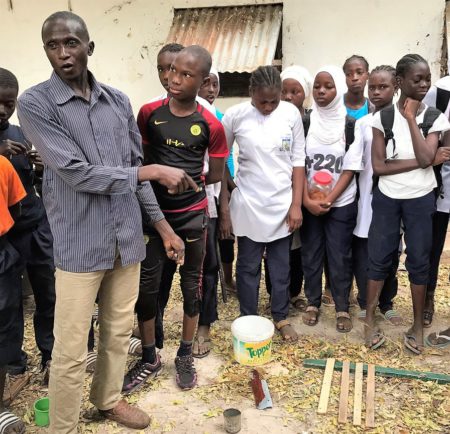
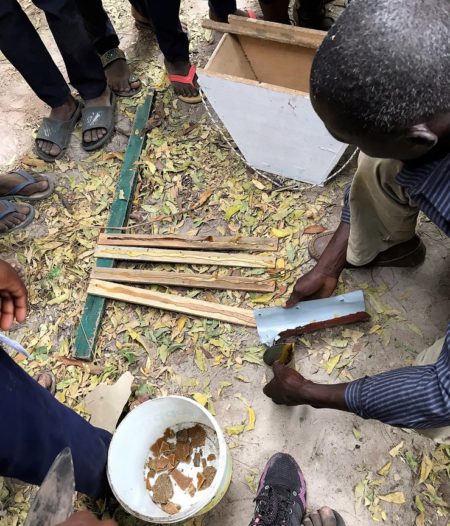
A catcher box is basically a mini beehive. It has top bars that are coated with beeswax to attract a queen bee. The small size gives the new queen the opportunity to develop a new hive slowly, and when the catcher box is fully populated, the bees can be transferred to a full size Kenyan Top Bar Hive.
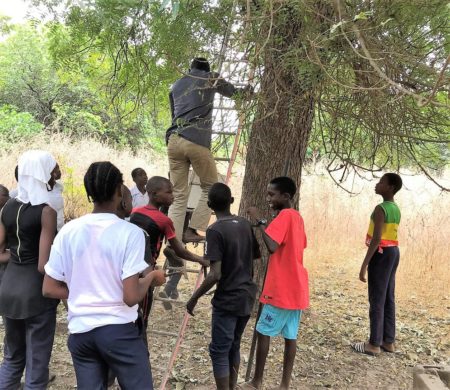
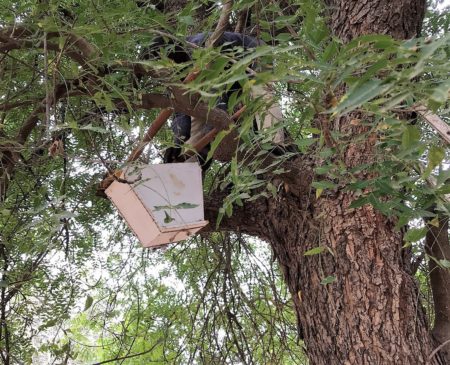
There are about one hundred agriculture students at ATC in grades seven through twelve. As we move through the different seasons, the goal is for all of them to have the opportunity to participate in the different beekeeping activities. I am grateful for Jatta’s experience working with bees, and appreciate his ability to explain everything in local language to the students. The goal at ATC is to teach young people life skills, because not all students will have the opportunity to attend university.

There are many great uses for honey and beeswax, and pictured above are some locally made products. They can be especially valuable for skin care products, because it provides protection against irritants, while still allowing the skin to breathe. It also offers anti-inflammatory, antibacterial and antiviral benefits making it helpful in treating skin irritation. Honey and beeswax products can be a great opportunity for entrepreneurs to develop another income source.
One thought on “Bees @ ATC”
This was a wonderful article…learned a lot…
Comments are closed.